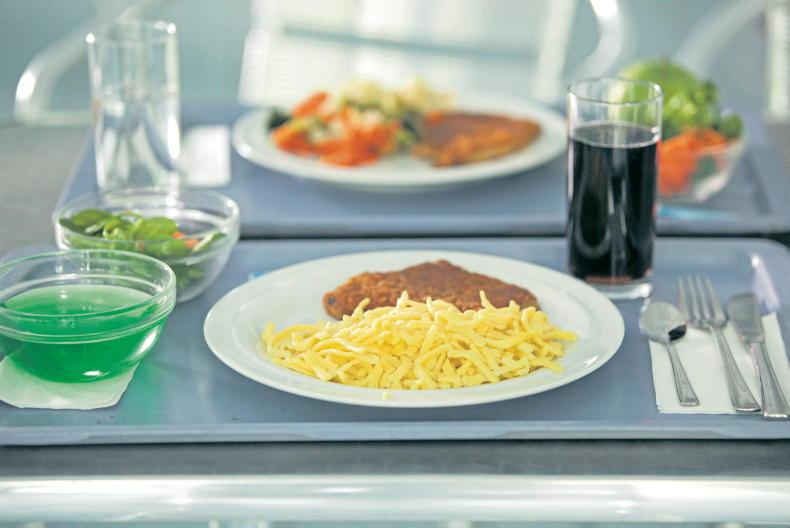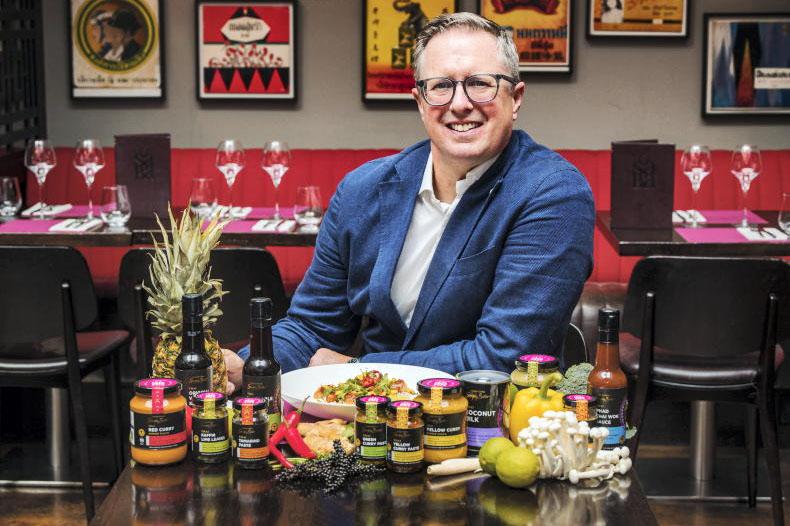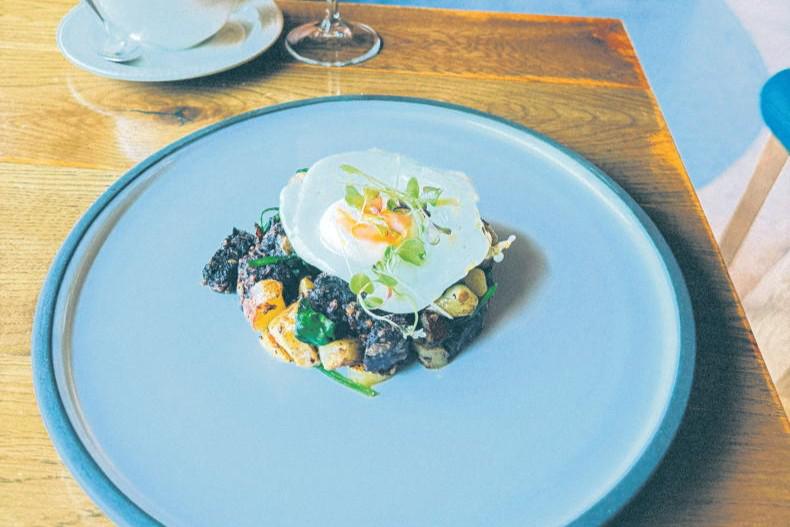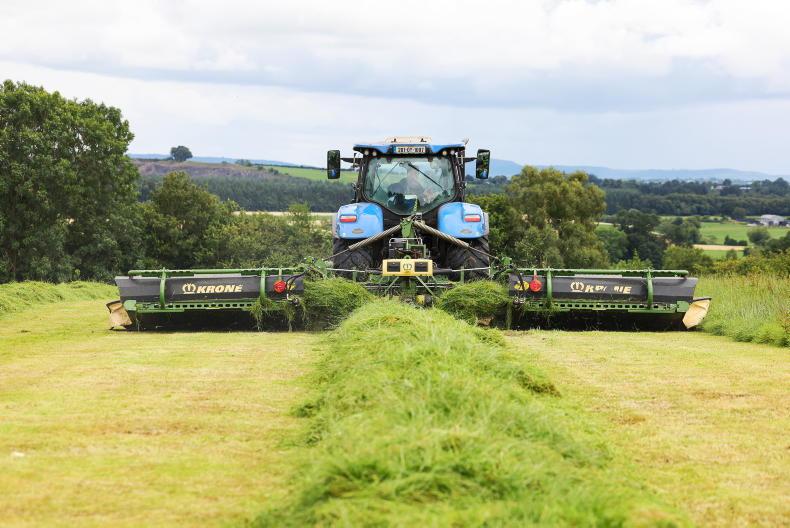Did you know that any time you have a meal in a public institution – like a hospital, college or prison – the ingredients were sourced via a process called public procurement?
According to the European Commission, “public procurement is the process by which public authorities, such as government authorities or local authorities, purchase goods or services from companies”.
In layman’s terms, it’s a strict list of rules, created by European Union (EU) law, to create a level playing field for businesses who wish to provide a service to our many public institutions.These rules also exist, partly, to avoid cronyism at high levels.
Under EU law, all medium- to higher value contracts must be awarded through competitive procedures called tenders. In Ireland, this is done digitally on the e-tenders website. Winning contracts tend to go to the most economically advantageous tender.
Catering
Food service is a big part of this process in the form of large-scale catering contracts. The food served in public institutions is also commonly known as “institutional cuisine” and, since public institutions tend to have tight budgets, most will hire the least expensive option.
When catering contracts are decided based solely on economics, taste, nutrition and supporting local producers can often play second fiddle.
This is why we often hear complaints about the quality and taste of hospital, or college food. It begs the question: are we missing the point?
Particularly when these foods should be helping patients heal, students learn and others rehabilitate. Shouldn’t nutrition, hospitality and supporting a circular Irish economy be more important than taking the least expensive option?
Any good chef will tell you that when you buy locally and in-season, you can easily stick to a budget. But changing the management of institutional kitchens requires strong leadership and a significant shift in mindset.
Government response
Irish Country Living reached out to the Department of Public Expenditure and Reform, the body responsible for governing public procurement in Ireland.
We asked why the system is not better able to support Irish farmers and encourage systemic change within public institutions.
A representative responded, saying improving their public procurement processes by removing obstacles and boosting the involvement of SMEs (small- to medium-sized enterprises) is a Government priority.
“The Government will continue to enhance the already substantial measures to support SMEs in accessing the public procurement market. One such measure is the subdivision of larger contracts into lots to facilitate access by SMEs.
Contracts can be divided in a number of ways including geography so contracts can be divided by region to allow local SMEs to compete,” they write.
Equal treatment necessary
By European and national definition, the public procurement process exists to include transparency, equal treatment and open competition. The Government representative states that this is essential in order to put public funds to good use.
“In this regard, companies from EU member states can compete for business in this jurisdiction while Irish businesses can avail of a wide range of public procurement opportunities outside of the State,” they add.
“The Public Service Spend and Tendering Analysis for 2019 report indicates that 92% of the €4.955bn procurement addressable expenditure analysed is with firms with an Irish base and that the majority of spend (52%) is with the SME sector.”
But choosing a business with an Irish base does not necessarily mean using an Irish-made product. Many largescale catering companies are multinational corporations and are the ones you will generally see winning contracts.
It’s hard to blame an institution for choosing them – they know what they’re doing when it comes to staff training, HACCP protocol and food safety, and they have the bandwidth to provide consistent service and supply.
Culinary conundrum
Jacinta Dalton heads the culinary department of the Galway campus at the newly launched Atlantic Technological University (formerly GMIT – Galway-Mayo Institute of Technology).
As she procures all of the ingredients their culinary students use, she felt it was an important part of their education in culinary arts and hospitality to also incorporate responsible food sourcing.
“When I started looking at procurement it was all based around price,” she explains.
“Price was always the key measurement and the cheapest [bid] often won the tender. Things like quality or value chain didn’t enter into the equation.”
She and her colleagues worked out a way to support local producers by using smaller supply chain quotation systems, which worked well for a time, but now that GMIT has merged into the new technological university, she has to rethink the procurement process once again as its budgets combine with other colleges.
“We have a really great new procurement manager here and she’s assisting me with navigating the waters, so to speak, and I’m very adamant we still need to maintain as much local supply as possible – because it’s educational,” Jacinta says.
“We’re not procuring food to eat food, we’re procuring food to teach about food. So I think it’s critical that we procure the best that’s out there.”
Dynamic Purchasing
Jacinta tells Irish Country Living about the programme her team uses to help with the procurement process called the dynamic purchasing system. This system favours smaller producers or farmers and is set up to enable them to come and go as they have available seasonal produce.
“Anyone interested in being involved in the tendering system needs to register on e-tenders, and that’s a very simple process,” she says.
“There are good tutorials on the e-tenders website. Don’t be put off by the bureaucracy around this – there will always be somebody in a public institution who will help you. Contact the local college, school or hospital – there will be somebody in there who may want to work with your network.”
Jacinta says the Galway ATU campus will be putting out a call for producers in the coming weeks. They hope to host a briefing session to explain the tendering process to potential small suppliers and farmers.
This is a step in the right direction, but at the moment the dynamic purchasing system is voluntary. There is no national mandate around responsible food sourcing and Jacinta believes this needs to change.
“If we’re talking about building a circular economy around food, the farmers and producers need to be central to that and we need to be building relationships,” she says.
The state of our
hospital food
In 2021, ICL wrote about chef Joyce Timmins, who took over the kitchens in the Rotunda Hospital in Dublin and proved it was possible to change menus and mindsets when it comes to institutional food in Ireland.
Her approach included buying fresh foods, limiting the menu options to make prep easier for kitchen staff, cutting out processed or pre-prepared ingredients and upskilling staff to increase their confidence in the kitchen.
However, in most Irish hospitals you still find meals which lack essential nutrients which patients need to heal
and be well.
‘I shouldn’t have to fight for adequate food to stay alive’
Claire* has been in an Irish hospital for the past eight weeks.
She is living with stage four kidney failure and will require a transplant. Her condition requires her to eat small bites throughout the day to ensure she keeps the food down, but additionally, she needs highly nutritious foods including good-quality proteins to help bring her to a healthy weight.
She says since she entered the hospital, she has become clinically malnourished.
“To say the stay has been a nightmare when it comes to food is an understatement,” she says.
“My body isn’t retaining potassium, despite high doses of IV potassium and oral potassium daily. I’m very underweight, so nutrition is incredibly important at the moment.
“Since coming to hospital I’ve had daily hassle with the dietetics department and catering staff trying to access the food I need. I’m honestly not fussy - I just need the basics and I can make it work.”
Meals in her particular hospital are delivered pre-portioned from an Irish-based catering company which offers (according to its website) “flexible local and international sourced ingredients” and a “fully traceable supply chain”.
Claire says the portions are small and it has been difficult to get sufficient fresh fruit and vegetables from their menus.
She requires smaller meals multiple times per day, but these needs can’t be accommodated with the hospital’s hot food service.
“I’ve been left with only cold meals so I can eat at my own pace,” she explains. “I’m incredibly angry that this seems like a conscious choice by the hospital. I shouldn’t have to fight for adequate food to stay alive.”
Irish Country Living reached out to the HSE with two questions: how are ingredients procured within the HSE – is it as per the individual institutions’ needs?
The second was: what is the current budget per plate (or total HSE annual budget) toward patient and hospital staff meals?
A representative responded to the first question, vaguely stating that “there are centralised procurement arrangements in place regarding food for HSE locations.”
Though we repeatedly asked for a response to the question regarding the HSE’s food budget, we did not receive one.
The Danish model
Though changing our system might be difficult in the short term, other countries have successfully revamped their institutional foods, with many successes while staying within budget.
In 2014, the Danish Government put its support behind a massive revamp of hospital food to help meet not just patient health and nutrition goals, but their climate goals as a nation.
A 2016 Healthcare Without Harm European Food Report, which featured Copenhagen-based Gentofte Hospital, states the hospital was able to stay on budget with this initiative in several ways, including spending less on prepared foods, cooking with basic ingredients, investing in staff upskilling, serving more seasonal fruits and vegetables, simplifying menus and focusing on ways to minimise food waste.
Today, the initiative is known as the “green and responsible hospital” programme, also called Grøn2030. The Government developed a new secretariat to support hospital kitchens through these changes (information obtained from a Government document).
Read more
Investigating your food: is it key to keep things simple?
Investigating your food: who grew your Easter egg?
Did you know that any time you have a meal in a public institution – like a hospital, college or prison – the ingredients were sourced via a process called public procurement?
According to the European Commission, “public procurement is the process by which public authorities, such as government authorities or local authorities, purchase goods or services from companies”.
In layman’s terms, it’s a strict list of rules, created by European Union (EU) law, to create a level playing field for businesses who wish to provide a service to our many public institutions.These rules also exist, partly, to avoid cronyism at high levels.
Under EU law, all medium- to higher value contracts must be awarded through competitive procedures called tenders. In Ireland, this is done digitally on the e-tenders website. Winning contracts tend to go to the most economically advantageous tender.
Catering
Food service is a big part of this process in the form of large-scale catering contracts. The food served in public institutions is also commonly known as “institutional cuisine” and, since public institutions tend to have tight budgets, most will hire the least expensive option.
When catering contracts are decided based solely on economics, taste, nutrition and supporting local producers can often play second fiddle.
This is why we often hear complaints about the quality and taste of hospital, or college food. It begs the question: are we missing the point?
Particularly when these foods should be helping patients heal, students learn and others rehabilitate. Shouldn’t nutrition, hospitality and supporting a circular Irish economy be more important than taking the least expensive option?
Any good chef will tell you that when you buy locally and in-season, you can easily stick to a budget. But changing the management of institutional kitchens requires strong leadership and a significant shift in mindset.
Government response
Irish Country Living reached out to the Department of Public Expenditure and Reform, the body responsible for governing public procurement in Ireland.
We asked why the system is not better able to support Irish farmers and encourage systemic change within public institutions.
A representative responded, saying improving their public procurement processes by removing obstacles and boosting the involvement of SMEs (small- to medium-sized enterprises) is a Government priority.
“The Government will continue to enhance the already substantial measures to support SMEs in accessing the public procurement market. One such measure is the subdivision of larger contracts into lots to facilitate access by SMEs.
Contracts can be divided in a number of ways including geography so contracts can be divided by region to allow local SMEs to compete,” they write.
Equal treatment necessary
By European and national definition, the public procurement process exists to include transparency, equal treatment and open competition. The Government representative states that this is essential in order to put public funds to good use.
“In this regard, companies from EU member states can compete for business in this jurisdiction while Irish businesses can avail of a wide range of public procurement opportunities outside of the State,” they add.
“The Public Service Spend and Tendering Analysis for 2019 report indicates that 92% of the €4.955bn procurement addressable expenditure analysed is with firms with an Irish base and that the majority of spend (52%) is with the SME sector.”
But choosing a business with an Irish base does not necessarily mean using an Irish-made product. Many largescale catering companies are multinational corporations and are the ones you will generally see winning contracts.
It’s hard to blame an institution for choosing them – they know what they’re doing when it comes to staff training, HACCP protocol and food safety, and they have the bandwidth to provide consistent service and supply.
Culinary conundrum
Jacinta Dalton heads the culinary department of the Galway campus at the newly launched Atlantic Technological University (formerly GMIT – Galway-Mayo Institute of Technology).
As she procures all of the ingredients their culinary students use, she felt it was an important part of their education in culinary arts and hospitality to also incorporate responsible food sourcing.
“When I started looking at procurement it was all based around price,” she explains.
“Price was always the key measurement and the cheapest [bid] often won the tender. Things like quality or value chain didn’t enter into the equation.”
She and her colleagues worked out a way to support local producers by using smaller supply chain quotation systems, which worked well for a time, but now that GMIT has merged into the new technological university, she has to rethink the procurement process once again as its budgets combine with other colleges.
“We have a really great new procurement manager here and she’s assisting me with navigating the waters, so to speak, and I’m very adamant we still need to maintain as much local supply as possible – because it’s educational,” Jacinta says.
“We’re not procuring food to eat food, we’re procuring food to teach about food. So I think it’s critical that we procure the best that’s out there.”
Dynamic Purchasing
Jacinta tells Irish Country Living about the programme her team uses to help with the procurement process called the dynamic purchasing system. This system favours smaller producers or farmers and is set up to enable them to come and go as they have available seasonal produce.
“Anyone interested in being involved in the tendering system needs to register on e-tenders, and that’s a very simple process,” she says.
“There are good tutorials on the e-tenders website. Don’t be put off by the bureaucracy around this – there will always be somebody in a public institution who will help you. Contact the local college, school or hospital – there will be somebody in there who may want to work with your network.”
Jacinta says the Galway ATU campus will be putting out a call for producers in the coming weeks. They hope to host a briefing session to explain the tendering process to potential small suppliers and farmers.
This is a step in the right direction, but at the moment the dynamic purchasing system is voluntary. There is no national mandate around responsible food sourcing and Jacinta believes this needs to change.
“If we’re talking about building a circular economy around food, the farmers and producers need to be central to that and we need to be building relationships,” she says.
The state of our
hospital food
In 2021, ICL wrote about chef Joyce Timmins, who took over the kitchens in the Rotunda Hospital in Dublin and proved it was possible to change menus and mindsets when it comes to institutional food in Ireland.
Her approach included buying fresh foods, limiting the menu options to make prep easier for kitchen staff, cutting out processed or pre-prepared ingredients and upskilling staff to increase their confidence in the kitchen.
However, in most Irish hospitals you still find meals which lack essential nutrients which patients need to heal
and be well.
‘I shouldn’t have to fight for adequate food to stay alive’
Claire* has been in an Irish hospital for the past eight weeks.
She is living with stage four kidney failure and will require a transplant. Her condition requires her to eat small bites throughout the day to ensure she keeps the food down, but additionally, she needs highly nutritious foods including good-quality proteins to help bring her to a healthy weight.
She says since she entered the hospital, she has become clinically malnourished.
“To say the stay has been a nightmare when it comes to food is an understatement,” she says.
“My body isn’t retaining potassium, despite high doses of IV potassium and oral potassium daily. I’m very underweight, so nutrition is incredibly important at the moment.
“Since coming to hospital I’ve had daily hassle with the dietetics department and catering staff trying to access the food I need. I’m honestly not fussy - I just need the basics and I can make it work.”
Meals in her particular hospital are delivered pre-portioned from an Irish-based catering company which offers (according to its website) “flexible local and international sourced ingredients” and a “fully traceable supply chain”.
Claire says the portions are small and it has been difficult to get sufficient fresh fruit and vegetables from their menus.
She requires smaller meals multiple times per day, but these needs can’t be accommodated with the hospital’s hot food service.
“I’ve been left with only cold meals so I can eat at my own pace,” she explains. “I’m incredibly angry that this seems like a conscious choice by the hospital. I shouldn’t have to fight for adequate food to stay alive.”
Irish Country Living reached out to the HSE with two questions: how are ingredients procured within the HSE – is it as per the individual institutions’ needs?
The second was: what is the current budget per plate (or total HSE annual budget) toward patient and hospital staff meals?
A representative responded to the first question, vaguely stating that “there are centralised procurement arrangements in place regarding food for HSE locations.”
Though we repeatedly asked for a response to the question regarding the HSE’s food budget, we did not receive one.
The Danish model
Though changing our system might be difficult in the short term, other countries have successfully revamped their institutional foods, with many successes while staying within budget.
In 2014, the Danish Government put its support behind a massive revamp of hospital food to help meet not just patient health and nutrition goals, but their climate goals as a nation.
A 2016 Healthcare Without Harm European Food Report, which featured Copenhagen-based Gentofte Hospital, states the hospital was able to stay on budget with this initiative in several ways, including spending less on prepared foods, cooking with basic ingredients, investing in staff upskilling, serving more seasonal fruits and vegetables, simplifying menus and focusing on ways to minimise food waste.
Today, the initiative is known as the “green and responsible hospital” programme, also called Grøn2030. The Government developed a new secretariat to support hospital kitchens through these changes (information obtained from a Government document).
Read more
Investigating your food: is it key to keep things simple?
Investigating your food: who grew your Easter egg?









SHARING OPTIONS